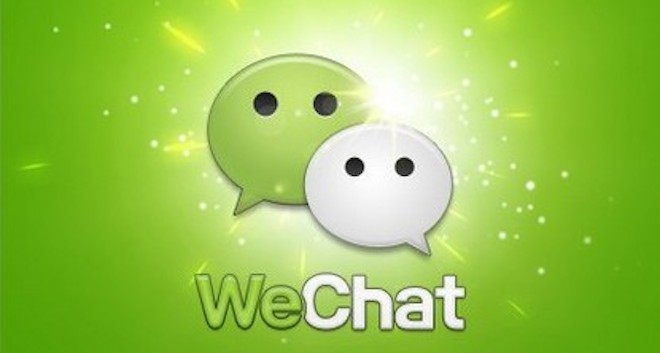WeChat may seem like a bit of a mystery to anyone living in the Western world, but for those living in China, it is the most important app right now. With a growing audience of more than 800 million active users (to put things in perspective, this figure is only trumped globally by Facebook at 1.86 billion, WhatsApp, YouTube, and QQ, another Chinese messaging-based app) WeChat is starting to enter the spotlight beyond its home shores.
It would be a discredit to call WeChat the Far East’s answer to Facebook. Launched back in January 2011 by Tencent, the app has evolved dramatically so it’s no longer just a way to keep in touch with friends. The app features pretty much everything you could want, all rolled into one place.
Although the vast majority of WeChat users are millennials, the app’s multiple functions has helped it appeal to a much wider demographic, which is where many of the other apps have fallen short. After all, why download lots of different apps when one app can do everything you need?


Although in principle the app mirrors platforms like Facebook, PayPal, YouTube and Uber with its services, it feels futuristic to use due to its omnipotence and diversity. With that much power at your fingertips, it’s easy to see why WeChat is so popular. It creates a whole new meaning to the idea of technology controlling and managing our daily lives. Think of a typical day – you browse the news on your commute, you email your colleagues to arrange a meeting, you hail a cab to get across the city, you cover the bill for lunch with your client, you video-call your colleague in another country, you order takeaway for dinner, you share a photo of your food with your friends, you play a video game against another online user, you file your electricity bill, you match with someone and set up a date for next week, you buy an outfit for your date, you listen to some music before bed…All of these things (and more!) are possible using WeChat.
The list of the app’s functions really is exhaustive. As research firm China Skinny explains: “WeChat’s reach and influence is unrivalled in China’s online space. It touches everything from consumers communicating with their nearest and dearest, to sharing their most special moments, to buying everything from cinema tickets to taxi rides.”
Spontaneity is at the heart of social connections. As well as its many useful and practical functions, the app also has a number of fun features that are completely unique (and a little crazy!). If you shake your phone when you’re on the app you can send a message to someone at random around the globe who happens to be shaking their phone at the exact same moment. You might not want to set your hopes too high at finding your next best friend or soulmate but it’s rather a spontaneous way to chat to someone and bridge the borders of distance. Sticking with the theme of connecting across continents, the ‘Drift Bottle’ feature lets you send a virtual message in a bottle (in the form of a text, an image or even a short audio clip), for any WeChat user to view and respond to. If you want to bring things a little closer to home, the ‘Look Around’ feature notifies you of other WeChat users in your area, letting you strike up a conversation online first without the awkwardness of real-life introductions.

And, if you’re feeling generous, there’s an extra special feature that lets you reward your loved ones by sending a virtual gift straight to their WeChat wallet. Tying in with the classic tradition of red envelopes and all of the well-wishing of Chinese New Year, the ‘Lucky Money’ feature is a fun way of celebrating occasions such as birthdays, weddings, graduations and new jobs, as well as simply being an act of goodwill. For New Year’s Eve alone, more than 14.2 billion hongbao (lucky money envelopes) were sent. It’s figures like these that show just how paramount the app is as a way for communicating in China.
You’d be mistaken in thinking that WeChat is just a platform for entertainment and the everyday though. Many businesses have helped to find their feet and connect with new customers through the app, and global giants such as Starbucks have helped to cement their place in the Asian market by creating tailored campaigns within the platform.
The coffeehouse received more than 22,000 messages a day back in 2012 with their ‘mood’ campaign, which responded to a user’s choice of emoji with a song reflecting that mood. And, the relatively new ‘Enterprise’ feature is making the app even more agile for business success and company communication, so that users can separate their work and private lives.
So, why isn’t the app more popular in the west? All things considered, WeChat sounds like the dream app, so it’s strange to think that it’s barely reached the western market. Although figures suggest there are more than 70 million users outside of China, there are a couple of fairly crucial reasons that WeChat remains largely unknown further afield. Most obviously, WeChat was a bit late to the party. With the likes of Facebook and WhatsApp already heralding a loyal following in Europe and America, it’s no wonder that these would only grow in popularity. It’s human nature to stick with what’s familiar – why download another app when all your friends are using these?
Also, it’s hard to deny that WeChat is very much centred around its Chinese audience. It’s various features, ad-ons and graphics celebrate and embrace the country’s culture, leaving less room to appeal to people outside of this. The localisation of the app is askew, simply neglecting the preferences of international users through lack of experimentation or testing.

Ultimately, WeChat is likely to remain at the crux of many Chinese people’s lifestyles, but for now at least, the western world is yet to embrace it with open arms. The only way that many people are likely to get a taste of the app is by jumping into a plane and vacationing in China – because even if you’re only in China for a day, you’ll feel like a complete stranger if you’re not on WeChat!


